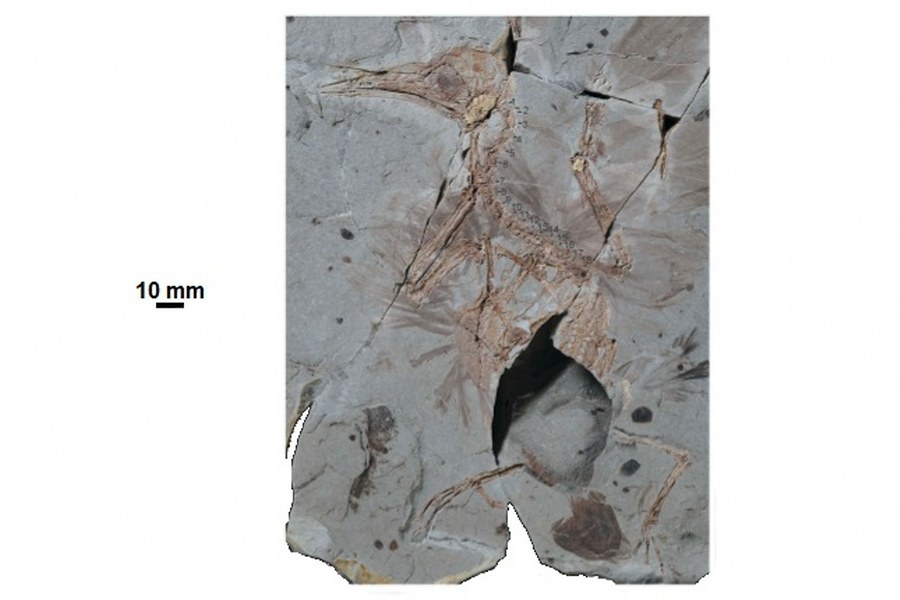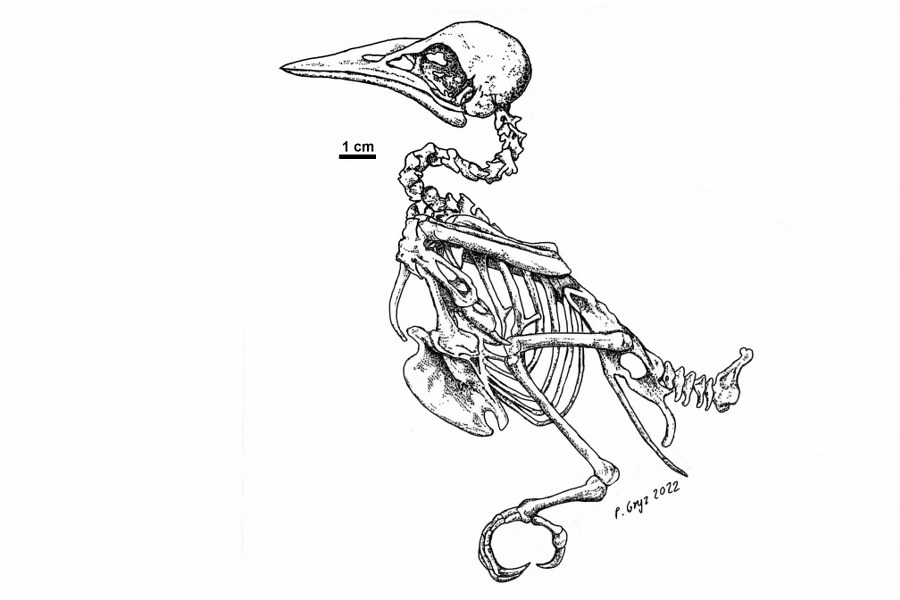Laurillardia munieri Flot, 1891
Sugerowana cytacja: Gryz, P. 2022. Laurillardia munieri Flot 1891. Ikonoteka (http://ikonoteka.paleo.pan.pl/xwiki/bin/view/Species/Laurillardia+munieri)
Diagnoza Very similar to Laurillardia longirostris but with a different proportion of limb bones; skeletal proportions similar to Madagascar starling (Hartlaubius auratus) but stout bill and shorter tarsometatarsus; somewhat larger than Laurillardia smoleni; the wing feathers without dark and light barring (as in recent Upupidae, Phoeniculidae and extinct Messelirissoridae); some contour feathers of the body exhibit darker tips, what can testify about differential pigmentation; closely adjacent feathers next to the right wing may represent very narrow rectrices or feathers of crest like similar to recent hoopoes. Porównanie Skull of Messelirrisor is similar in the proportions of the long beak, the culmen of which forms a low bulge at its base; as in extant Upupidae and Phoeniculidae, there are 18 presacral vertebrae, whereas most other arboreal landbirds have of 19; as in extant Upupidae and Phoeniculidae furcula is U-shaped and lacks an apophysis furculae; carina sterni is deep as in the Upupidae, whereas it is much shallower in the Phoeniculidae; proportions of the pedal phalanges similar to extant Upupidae and Phoeniculidae (the third and fourth toes are of subequal length, whereas the second toe is much shorter); hallux is long, but not as elongated as in crown group Upupidae and Phoeniculidae Autekologia Deep carina sterni suggests that this species was not trunk climbing. Występowanie geograficzne France (Paris) and Poland (Jamna Dolna) Zasięg czasowy Late Eocene to Early Oligocene (from Priabonian to Rupelian; 34–30 Ma, Vandenberghe et al. 2012). Materiały muzealne type specimen from Paris and specimen from Poland (SMNK-PAL 9200a+b) Literatura Flot, L. 1891. Description de deux oiseaux nouveaux du gypse parisien. Mém. Soc. Géol. Fr. Paléontol. 7:1‒10. Mayr, G.; Bochenski, Z.M.; Tomek, T.; Wertz, K.; Bienkowska-Wasiluk, M. & Manegold, A. 2019. Skeletons from the early Oligocene of Poland fill a significant temporal gap in the fossil record of upupiform birds (hoopoes and allies). Historical Biology 32(9): 1163-1175. Vandenberghe N., Hilgen F.J. and Speijer R.P. 2012. The Paleogene period. In: Gradstein FM, Ogg JG, Schmitz MD, Ogg GM, editors. The geological time scale 2012. Oxford: Elsevier; p. 855‒921. |
|


